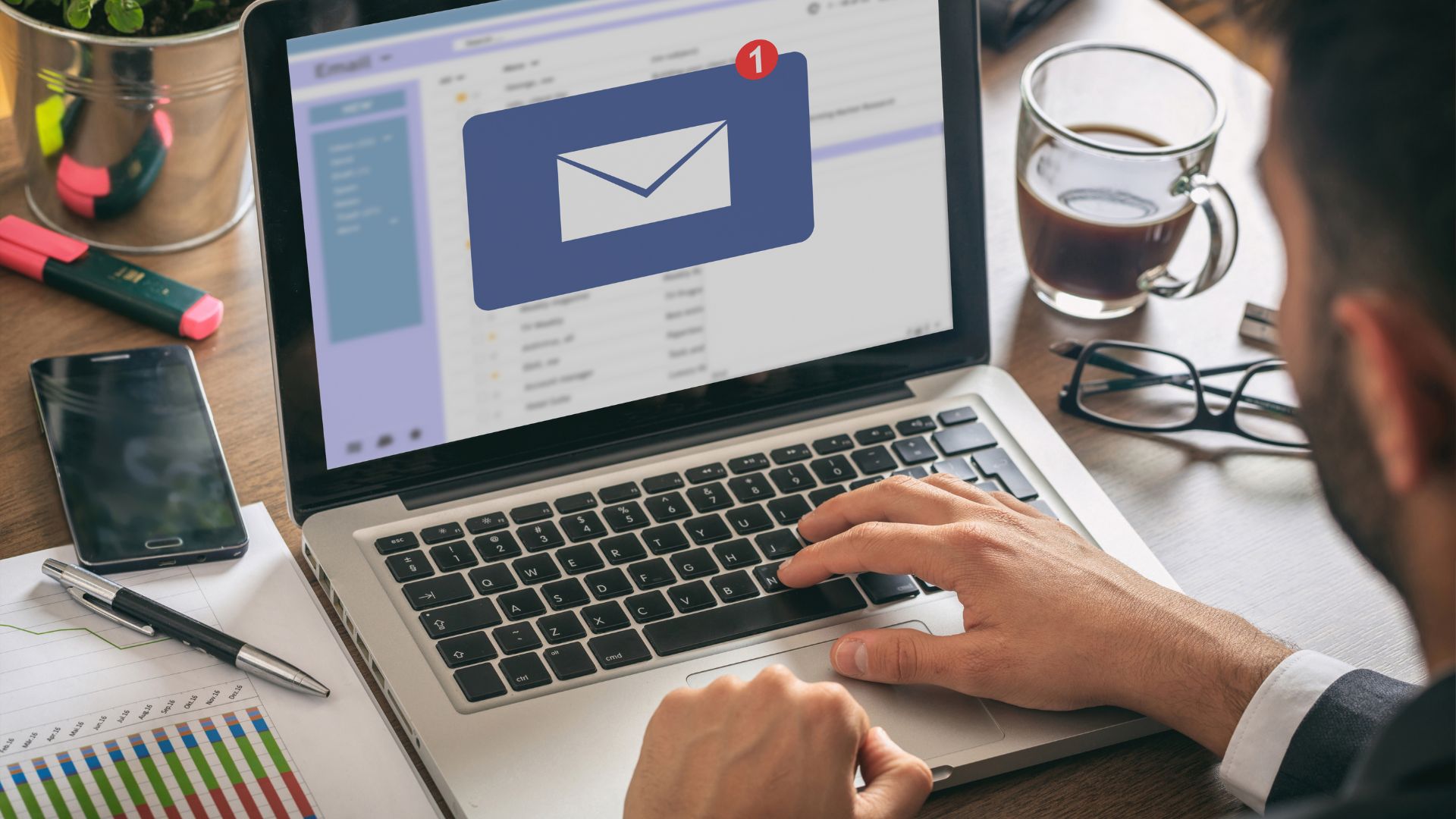Introduction
In today’s fast-paced digital marketing environment, businesses face the constant challenge of capturing and retaining audience attention. A strategic approach to email marketing can provide a significant edge, transforming mere communication into an impactful engagement tool. This article explores a subtle yet powerful email marketing trick that could enhance lead generation and elevate overall campaign effectiveness.
By examining concepts such as audience segmentation, content personalization, and optimal send times, marketers can unlock the potential for dramatic increases in open and click-through rates. Understanding these elements allows brands to craft messages that resonate with specific segments of their audience, paving the way for stronger connections and improved conversion rates.
Moreover, this insightful strategy encourages marketers to utilize analytics tools for tracking performance, equipping them with the data needed to make informed decisions. As they uncover trends and patterns within their campaigns, businesses can iterate and refine their approaches, ensuring sustained engagement and loyalty from their audience.
The beauty of this email marketing trick lies in its simplicity; the adjustments required are often minor yet can yield significant results. By harnessing this knowledge, marketers not only enhance their messaging but also position their businesses for sustained growth in an ever-changing marketplace. Join us as we delve deeper into this effective strategy and uncover the key to mastering email marketing.
Understanding the Power of a Simple Email Marketing Trick
In the competitive landscape of digital marketing, minor adjustments in email strategy can lead to significant advancements in lead generation. Effective email marketing goes beyond merely sending out messages; it requires strategic thinking and a keen understanding of audience behavior. One of the most impactful changes a marketer can implement is a simple trick that optimizes email campaigns without necessitating a complete overhaul.
By focusing on specific elements such as audience segmentation, timing, and content relevancy, marketers can enhance engagement levels dramatically. For instance, segmenting email lists allows businesses to tailor communications to different demographic groups, ensuring messages resonate deeply with recipients. This precise approach not only boosts open rates but also drives higher click-through rates, thereby increasing the potential for lead conversion.
Additionally, leveraging analytics tools to monitor performance can provide valuable insights into how these adjustments impact overall campaign success. By thoroughly understanding this simple email marketing trick, marketers can foster more meaningful connections with their audience, resulting in enhanced customer loyalty and higher conversion rates.
Ultimately, making small, strategic changes in email marketing practices can unlock a wealth of opportunities for lead generation, positioning businesses to thrive in an ever-evolving market. Embracing this knowledge empowers marketers to harness the true potential of email as a powerful tool for business growth and engagement.
The Psychology Behind Effective Email Engagement
Understanding the psychology behind email engagement is crucial for marketers aiming to enhance communication with their audience. Research has highlighted several cognitive triggers that influence recipients’ behavior in response to email marketing. For instance, the principle of reciprocity suggests that individuals are more likely to engage when they perceive value in the interaction. By offering useful content or incentives in an email, marketers can foster a sense of obligation, prompting recipients to take desired actions.
Moreover, the scarcity principle, which emphasizes limited availability, can further enhance engagement. Emails that convey urgency—whether through time-sensitive offers or exclusive information—encourage quicker responses. Another significant factor is social proof; showcasing testimonials or popular trends can instill trust and lead recipients to follow suit.
Effective email engagement also relies on a deep understanding of emotional triggers. Emails that evoke positive feelings through storytelling or relatable scenarios often resonate more with audiences, increasing click-through rates. Marketers can tap into these psychological insights to craft more relevant and impactful messages.
Ultimately, the key to leveraging these psychological principles lies in the consistency of communication, ensuring that each interaction is meaningful. By applying these insights, businesses can create a more compelling email marketing strategy that not only reaches inboxes but also captures attention and drives action. Understanding the psychology of engagement provides a foundational approach for improving overall lead generation tactics.
Crafting Irresistible Subject Lines That Convert
Creating compelling subject lines is crucial for successful email marketing campaigns. A well-crafted subject line serves as the first impression for potential leads and can significantly boost open rates. To harness the power of this email marketing trick, marketers should incorporate elements that pique curiosity and convey urgency. For instance, using action-oriented language and posing questions can entice recipients to click on the email.
Additionally, utilizing personalization in subject lines can significantly enhance engagement. Addressing recipients by their name or referencing their previous interactions helps create a connection. This psychological tactic taps into the recipient’s interest, compelling them to explore the content within the email.
Another effective strategy is to keep subject lines concise and focused. Research indicates that shorter subject lines, ideally around 50 characters, tend to resonate better with audiences, especially on mobile devices. Including numbers or clear benefits can also catch the eye, making the email stand out in crowded inboxes.
Furthermore, A/B testing different subject lines allows marketers to analyze performance data and refine future campaigns. This iterative process ensures that the most effective language and formats are identified, ultimately increasing open rates and engagement.
In summary, crafting irresistible subject lines is an essential email marketing trick. By focusing on curiosity, personalization, brevity, and continuous improvement, marketers can significantly enhance their email open rates and lead generation efforts.
Personalization: The Secret Sauce in Email Marketing Trick Success
Personalization emerges as a crucial element in enhancing email marketing effectiveness. By tailoring content to individual recipients, marketers can significantly increase relevance and engagement, leading to improved response rates. Utilizing data-driven insights, companies can segment their audience to deliver customized messages that resonate with personal preferences and behaviors. A simple yet impactful email marketing trick involves addressing recipients by their names and acknowledging past interactions, which fosters a sense of connection.
Furthermore, personalized recommendations based on previous purchases or browsing history can capture the recipient’s attention more effectively than generic content. This approach not only enhances the perceived value of the email but also builds a stronger relationship between the brand and its audience. It empowers marketers to align their campaigns with customer interests, thereby promoting higher click-through and conversion rates.
Incorporating personalized elements such as tailored subject lines and targeted offers signifies respect for the recipient’s individuality, prompting them to engage more actively with the content. Such strategies have been shown to elevate customer satisfaction and loyalty over time. Overall, leveraging personalization in email marketing can transform a simple message into a potent tool for lead generation, underscoring the importance of understanding audience dynamics for successful marketing campaigns.
Timing and Frequency: Maximizing the Impact of the Trick
Understanding the timing and frequency of email marketing campaigns is crucial for maximizing their impact. Research indicates that sending emails at optimal times can significantly enhance engagement rates. Marketers often find that emails dispatched during weekday mornings or early afternoons yield higher open rates, as these periods align with common workday behaviors.
Moreover, the frequency of email communication plays a pivotal role in maintaining subscriber interest. Striking the right balance is essential; too frequent emails may lead to unsubscribes, while infrequent communication can cause potential leads to forget about the brand. A/B testing can be an effective method for determining the ideal sending frequency, allowing marketers to assess how often their audience prefers to receive updates.
Utilizing analytics tools provides valuable insights into subscriber behavior, helping determine the best times to send emails based on past interactions. For example, tracking open and click-through rates can inform marketers about when their audience is most responsive. In addition, segmenting the audience based on engagement levels can allow for tailored scheduling that meets diverse preferences, ensuring that each recipient receives content at a time that suits them.
Ultimately, mastering timing and frequency in email marketing is essential for leveraging this critical trick effectively. By adopting a data-driven approach, marketers can enhance their strategies, ensuring that every email sent contributes to higher lead generation and improved conversion rates.
Measuring Results and Optimizing Your Email Strategy
To assess the effectiveness of an email marketing trick, businesses must leverage various tools and metrics that provide insights into engagement and conversion. Key performance indicators (KPIs) such as open rates, click-through rates (CTR), and conversion rates are essential for understanding the success of email campaigns. Email marketing platforms often offer built-in analytics that allows marketers to track these metrics efficiently.
In addition to basic metrics, segmentation analysis can reveal how different audience subsets respond to email strategies. This information is invaluable for refining target demographics and tailoring content to meet their preferences. A/B testing is also a crucial practice, enabling marketers to experiment with different subject lines, email designs, and calls to action to determine what resonates best with subscribers.
Furthermore, understanding the customer journey can guide marketers in optimizing their email strategies. By analyzing subscriber behavior, such as click paths and engagement patterns, businesses can tailor follow-up emails to enhance user experience. Tools such as Google Analytics can provide a comprehensive view of overall email marketing performance, contributing to informed decision-making.
Incorporating these measurement techniques helps in fine-tuning the email marketing trick, enhancing its efficiency, and ultimately driving more qualified leads. Regular assessment and adaptation based on gathered data is key to sustaining successful email campaigns that foster long-term audience relationships.
Conclusion
In conclusion, the understanding of a simple email marketing trick can significantly enhance lead generation and customer engagement in today’s competitive digital arena. By implementing strategic tactics such as audience segmentation, optimizing send times, and ensuring content relevance, marketers can achieve remarkable improvements in their campaigns. The emphasis on tailored communication not only boosts open and click-through rates but also cultivates stronger relationships with recipients, leading to greater customer loyalty.
Moreover, utilizing analytics tools to track campaign performance allows for ongoing refinement and adaptation of strategies, ensuring sustained success. As businesses strive to connect with their audiences more effectively, the knowledge gleaned from this simple adjustment is invaluable. This practical approach empowers marketers to elevate their email campaigns, transforming them from standard outreach into impactful interactions that drive conversions.
Ultimately, as marketers embrace these insights, they position their businesses to thrive in an ever-evolving landscape. By incorporating this simple yet powerful email marketing trick, organizations can harness the full potential of their campaigns, fostering not just higher engagement but also paving the way for sustainable growth in their respective markets. As the digital marketing sphere continues to evolve, the power of strategic email communication remains a constant, proving its worth as a key driver of business success.

















